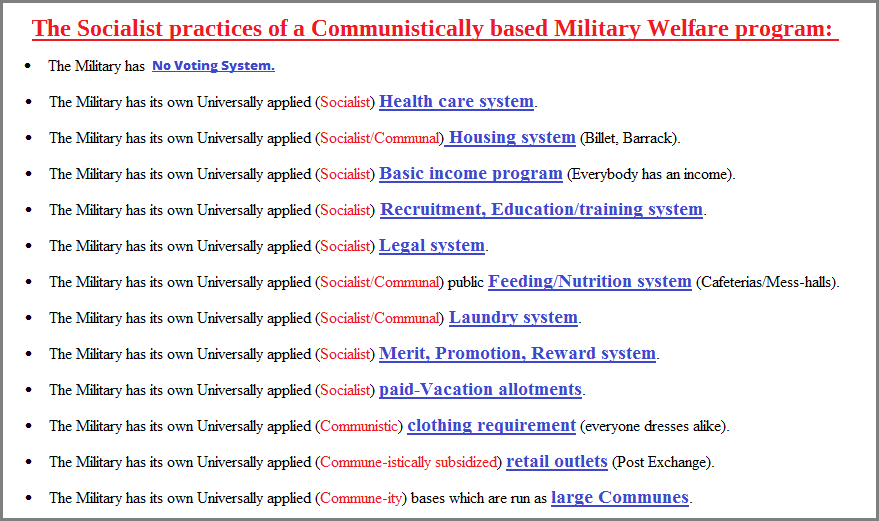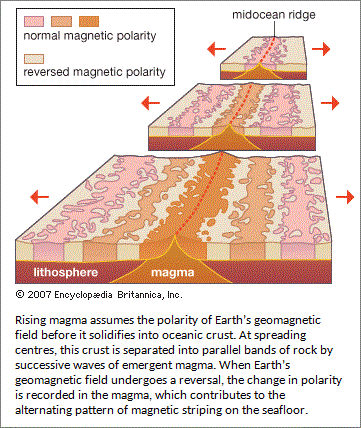page 8
Note: the contents of this page as well as those which precede and follow, must be read as a continuation and/or overlap in order that the continuity about a relationship to/with the dichotomous arrangement of the idea that one could possibly talk seriously about peace from a different perspective as well as the typical dichotomous assignment of Artificial Intelligence (such as the usage of zeros and ones used in computer programming) ... will not be lost (such as war being frequently used to describe an absence of peace and vice-versa). However, if your mind is prone to being distracted by timed or untimed commercialization (such as that seen in various types of American-based television, radio, news media and magazine publishing... not to mention the average classroom which carries over into the everyday workplace), you may be unable to sustain prolonged exposures to divergent ideas about a singular topic without becoming confused, unless the information is provided in a very simplistic manner.
Let's face it, humanity has a lousy definition, accompanying practice, and analysis of peace.
For those of you who have already forgotten some of the information on the previous page, where three forms of memory were mentioned, (short-term, long-term, episodic); even though only the first two garnered any significant reference since those in psychology like to use patterns-of-two (see page 6 in this series)... it is of value to make a parallel connection with semi-conductor memory with respect to applications in computers because of the two-patterned on/off switching of electrical circuitry which occurs at fast rates of speed. With respect to its application in a context referencing the topic of "Peace", the unsustainability of peace and its on-again/off-again appearance at different times and places— suggests a binary type of cognitive activity.
Semiconductor memory There are two basic kinds of semiconductor memory. Static RAM (SRAM) consists of flip-flops, a bi-stable circuit composed of four to six transistors. Once a flip-flop stores a bit, it keeps that value until the opposite value is stored in it. SRAM gives fast access to data, but it is physically relatively large. It is used primarily for small amounts of memory called registers in a computer's central processing unit (CPU) and for fast “cache” memory. Dynamic RAM (DRAM) stores each bit in an electrical capacitor rather than in a flip-flop, using a transistor as a switch to charge or discharge the capacitor. Because it has fewer electrical components, a DRAM storage cell is smaller than SRAM. However, access to its value is slower and, because capacitors gradually leak charges, stored values must be recharged approximately 50 times per second. Nonetheless, DRAM is generally used for main memory because the same size chip can hold several times as much DRAM as SRAM. Storage cells in RAM have addresses. It is common to organize RAM into “words” of 8 to 64 bits, or 1 to 8 bytes (8 bits = 1 byte). The size of a word is generally the number of bits that can be transferred at a time between main memory and the CPU. Every word, and usually every byte, has an address. A memory chip must have additional decoding circuits that select the set of storage cells that are at a particular address and either store a value at that address or fetch what is stored there. The main memory of a modern computer consists of a number of memory chips, each of which might hold many megabytes (millions of bytes), and still further addressing circuitry selects the appropriate chip for each address. In addition, DRAM requires circuits to detect its stored values and refresh them periodically. Main memories take longer to access data than CPUs take to operate on them. For instance, DRAM memory access typically takes 20 to 80 nanoseconds (billionths of a second), but CPU arithmetic operations may take only a nanosecond or less. There are several ways in which this disparity is handled. CPUs have a small number of registers, very fast SRAM that hold current instructions and the data on which they operate. Cache memory is a larger amount (up to several megabytes) of fast SRAM on the CPU chip. Data and instructions from main memory are transferred to the cache, and since programs frequently exhibit “locality of reference”—that is, they execute the same instruction sequence for a while in a repetitive loop and operate on sets of related data—memory references can be made to the fast cache once values are copied into it from main memory. Much of the DRAM access time goes into decoding the address to select the appropriate storage cells. The locality of reference property means that a sequence of memory addresses will frequently be used, and fast DRAM is designed to speed access to subsequent addresses after the first one. Synchronous DRAM (SDRAM) and EDO (extended data output) are two such types of fast memory. Nonvolatile semiconductor memories, unlike SRAM and DRAM, do not lose their contents when power is turned off. Some nonvolatile memories, such as read-only memory (ROM), are not rewritable once manufactured or written. Each memory cell of a ROM chip has either a transistor for a 1 bit or none for a 0 bit. ROMs are used for programs that are essential parts of a computer's operation, such as the bootstrap program that starts a computer and loads its operating system or the BIOS (basic input/output system) that addresses external devices in a personal computer (PC). EPROM (erasable programmable ROM), EAROM (electrically alterable ROM), and flash memory are types of nonvolatile memories that are rewritable, though the rewriting is far more time-consuming than reading. They are thus used as special-purpose memories where writing is seldom necessary—if used for the BIOS, for example, they may be changed to correct errors or update features. Auxiliary memory Auxiliary memory units are among computer peripheral equipment. They trade slower access rates for greater storage capacity and data stability. Auxiliary memory holds programs and data for future use, and, because it is nonvolatile (like ROM), it is used to store inactive programs and to archive data. Early forms of auxiliary storage included punched paper tape, punched cards, and magnetic drums. Since the 1980s, the most common forms of auxiliary storage have been magnetic disks, magnetic tapes, and optical discs. David Hemmendinger: Professor of computer science at Union College, Schenectady, New York. Co-editor of Encyclopedia of Computer Science, 4th ed. (2000).Source: "Computer Memory." Encyclopædia Britannica Ultimate Reference Suite, 2013. |
 A common 'person speed' of switching. |
 After drinking coffee or an energy drink. |
 A very slow computer switching speed. |
Source for switches: Artificial Intelligence and 3'sology page 19

Like early projectors whose speeds allowed the human eye to capture a sense of changes in scenes printed on film attached together and placed into rolls on wheels so that a light source could be shown through the film (called a "flicker rate"), the human mind and accompanying physiology is using a slow moving type of on/off switching mechanism (like the reversal of Earth's geo-magnetic polar regions). The topic of "peace", because of its "flicker rate" (episodic occurrences), we must rethink what the word "peace" and its associated activities actually mean beneath all the human activities which are metaphorical expressions of something more basic in terms of our physiologically-based electrical activity.
Because the foregoing article speaks of large capacities of memory, the fact that we can even think in such terms means that humanity has an ability to think in larger terms than the limitations being evidenced in the running list of examples being provided in this essay series. However, just because we can think it, does not mean that we can easily practice it... particularly when a decaying environment influences us to think in conservative terms as part of an adaptability to maintain a semblance of equilibrium. In other words, we have a capacity to think in larger and more complex patterns but are forced to think in limited forms and formulas.
By taking a survey of the subject called "Plate Tectonics", the idea of geo-magnetic reversals might be better understood and thus be more easily applied to the notion of "peace" as an electrical impulse whose fluctuations are affected by a "switching" mechanism (on/off, high/low, in/out, etc...) involving changes in magnetism due to the ongoing decay of planetary phenomena:
The Vine-Matthews hypothesis Magnetic anomalies In 1961, a magnetic survey of the eastern Pacific Ocean floor off the coast of
Oregon and California was published by two geophysicists, Arthur D. Raff and Ronald
G. Mason. Unlike on the continents, where regional magnetic anomaly patterns tend
to be confused and seemingly random, the seafloor possesses a remarkably regular
set of magnetic bands of alternately higher and lower values than the average values
of Earth's magnetic field. These positive and negative anomalies are strikingly linear
and parallel with the oceanic ridge axis, show distinct offsets along fracture zones,
and generally resemble the pattern of a zebra skin. The axial anomaly tends to be
higher and wider than the adjacent ones, and in most cases the sequence on one side
is the approximate mirror image of that on the other.
Reversal of Earth's magnetic field A key piece to resolving this pattern came with the discovery of magnetized samples from a sequence of basalt lavas. These lavas were extruded in rapid succession in a single locality on land and showed that the north and south poles had apparently repeatedly interchanged. This could be interpreted in one of two ways—either the rocks must have somehow reversed their magnetism, or the polarity of Earth's magnetic field must periodically reverse itself. Allan Cox of Stanford University and Brent Dalrymple of the United States Geological Survey collected magnetized samples and showed that these samples from around the world displayed the same reversal at the same time, implying that the polarity of Earth's magnetic field periodically reversed. These studies established a sequence of reversals dated by isotopic methods. Assuming that the oceanic crust is indeed made of basalt intruded in an episodically reversing geomagnetic field, Drummond H. Matthews of the University of Cambridge and a research student, Frederick J. Vine, postulated in 1963 that the new crust would have a magnetization aligned with the field at the time of its formation. If the magnetic field was normal, as it is today, the magnetization of the crust would be added to that of Earth and produce a positive anomaly. If intrusion had taken place during a period of reverse magnetic polarity, it would subtract from the present field and appear as a negative anomaly. Subsequent to intrusion, each new block created at spreading centre would split and the halves, in moving aside, would generate the observed bilateral magnetic symmetry. Given a constant rate of crustal generation, the widths of individual anomalies should correspond to the intervals between magnetic reversals. In 1966, correlation of magnetic traverses from different oceanic ridges demonstrated an excellent correspondence with the magnetic polarity-reversal time scale established by Cox and Dalrymple on land. This reversal time scale went back some three million years, but since then, further extrapolation based on marine magnetic anomalies (confirmed by deep-sea drilling) has extended the magnetic anomaly time scale far into the Cretaceous Period, which spans the interval from about 146 million to 65.5 million years ago. About the same time, Canadian geologist Laurence W. Morley, working independently of Vine and Matthews, came to the same explanation for the marine magnetic anomalies. Publication of his paper was delayed by unsympathetic referees and technical problems and occurred long after Vine's and Matthews's work had already firmly taken root. Tjeerd H. van Andel: Wayne Loel Professor Emeritus of Earth Sciences, Stanford University, California. Honorary Professor of Earth History, University of Cambridge. Author of New Views on an Old Planet: Continental Drift and the History of the Earth.J. Brendan Murphy: Professor of Geology, St. Francis Xavier University, Nova Scotia, Canada. Source: "Plate Tectonics." Encyclopædia Britannica Ultimate Reference Suite, 2013. |
Hence, the idea should rightly be termed the Vine, Matthews, Morely perspective as a shared contribution to human knowledge. In addition, coincidentally... the use of the "Zebra skin" analogy should be accompanied with the reference that the display patterns— when looked closely at, are like the different finger-print "signatures" each of us has.
The presence of geologically identified magnetic reversals should not be limited to this data. We should also include human ideas which utilize a "reversal" formula such as might be labeled intermittent "see-sawing", pendulum swinging, schizophrenic-ambivalence, bi-polar alternations, dichotomies, dualities, cyclical transformations, etc... all because of the planetary phenomena which affects human physiology and subsequent mental/emotional behavior; from which notions of "truth", "reality", "righteousness", "superiority", bilateral physical symmetry, etc., are derived. (The term "intermittent" can be related to long-term geologic time periods, or short-term (accelerated) life-spans exhibited by some insects whose life-cycles (when compared to humans or other so-called long-lived species) is particularly fast, and therefore constitutes a rather fast "flicker" or switching rate.
Since the life spans of different species have existed (and died out) during geological time periods of magnetic reversals, and we humans have not thought to look for tell-tale signs in behavior, behavioral changes of behavior in humans exposed to an approaching magnetic reversal may not be identified as a result of the phenomena nor understood in terms of transitional changes as the fluctuation tends to decrease and a stability in the magnetic field is established. Social fluctuations in behavior due to a reversing magnetic field may be otherwise incorrectly interpreted as some other era-specific sociological change when the actual influence has to do with a larger environmental affect.
Thus, our definitions of Peace and attempted application of those definitions are as variable as the seasons. And even though many in the world want to rely on the Judgment of a Nobel Prize committee in order to draw out the parameters of what is and is not worthy of their recognition... the fact remains that the Nobel Peace Prize award contributes to a misunderstanding of what Peace actually is apart from its variable interpretation and attempted valuable social application. In other words, the overall usage of the Nobel Peace prize as an instrument of attempted instigation to light a fuse of sustainable peace amounts to being an activity that dries out a portion of a very long and very damp wick— in order to satisfy its in-house ceremonial requirements of (regulated) diversification; but the history of its efforts fall very short of the intended ideal of creating a sustained fireworks display of global peace. And even though we want to rationalize its importance, that without its own peace efforts in various circumstances being given recognition and thus some receiving an adapted-to honored human standard... the future idea and efforts of peace might well become minimized to an insignificance as the lives of people have been subjected to.
Even though humanity writes a particular definition down doesn't mean it individually, much less collectively... interpret the same words in the same order as it did when the person who wrote the definition; and even their own thoughts and feeling of what they wrote may have been subsequently altered, thus leaving the definition as a generality... a sort of believed in place to begin thinking about what peace may mean for a given people in a given time and place for a given situation. By agreeing that the specifics of a definition of Peace are relative... in the eye of the beholder, if there is no one to impose a central idea of what peace is to mean at such a moment, we might well have billions of different interpretations of what Peace means... if a given population is measured in the billions, or millions, or thousands or even just in a conflict between two people. As in the case of many variously defined quarrels, fights, arguments, wars, battles, skirmishes, etc., if there is no parental figure... like wisdom, an enlightened consciousness, advanced intelligence, or over-riding compassionate realization to take hold of the situation in place of a respected mom, dad, big brother/sister, organization, institution, police officer, teacher, judge, legal system, government, United Nations, etc., the definition of peace and its application methods are up for grabs.
More and more occasions of conflict are having to be forced into some semblance of an individually defined "absence of conflict" definition by way of even more force being applied, because global legal systems, religions, governments and businesses have shown themselves to be untrustworthy and therefore can not be respected. Take for example the situation in which the U.S. government (and so many other governments) claims itself to be a nation that practices a democracy, when the people are subjected to a politicized process of election which can undermine the Collective Will of voters as was clearly shown in the 2016 Presidential race/contest against Donald Trump and Hillary Clinton... Though she received the most votes, he was announced the winner (even before all the votes were tallied because the word political "race" is childishly applied with the notion of someone reaching an imaginary finish line first) because of a convoluted election system involving what is called the "Electoral College" but effectively translates into a means by which the government can keep the people for practicing an Actual Democracy. No less, whereas the military of the U.S. often claims its combative actions are justified because of some over-riding interest in preserving the right of one or another people to practice a democracy; yet it won't even practice what it preaches as observed by the following list of its own non-democracy activities and organizational observances:

There is no reason to respect the presumably intended Peace efforts of a government and its military when there is such a stark display of hypocrisy. Simply put, governments time and again show themselves to be liars. They say one thing, do another, and yet have still another ulterior motive that they may be striving for; all at the expense of a vulnerable citizenry who are not permitted to exercise supposed control of "their" government by way of a system of democracy that is formulated on a means to undermine the Collective Will of the People. And if we can't believe our own governments because of all the pathetic machinations that have nothing whatsoever in doing what is best for a populace much less humanity the whole, there is no reason for anyone to respect what the Nobel Peace Prize Committee does since history has pointed out such efforts do not coincide with a means to force all nations to be obligated to peace.
When we have one American politician after another use words such as attack and war to describe any number of events, we must view them as we view an adolescent's exercise of cussing... along with a similar mental focus seen in a school yard fight; while at the same time no one notices that public school systems do not have any courses specifically directed towards teaching a philosophy of peace and conflict resolution. Instead, school children are subjected to cultures where physical, mental, and emotional contests are allowed under the rubric of a sports contest, legal contest, political contest, beauty contest, etc... which encourages all of us to take one side or another because it is viewed as "good business"... which is the presently reigning Capitalist credo. But irrespective of the attached economic conditions of possible profitability evident in so very many contests, we fail to recognize that Peace is just another type of contest where fortunes and reputations can be lost or gained.
Peace, charity, love, compassion, etc., are either deliberately arranged or emerge as an opportunity for some level of economics to take hold. And yet, economics is not the bottom line of behavioral intent either. It too has been misinterpreted, mis-defined, and misapplied. Peace and Economics may be viewed as opposite sides of a coin by some, but it is still the same coin that very often goes into the pocket of a few whose predatory skills are ever watchful for one or another opportunity to accumulate a storage of nuts... as if guided by some underlying instinctual hoarding behavior... even if their terrain is flush with an abundant supply that could be equally shared by all, except they don't want to share. They neither want the world to have the lion's share of peace, because they want to control peace in order to make a profit.
Those organizations which focus on dispensing their definitions and application of peace, do so because it provides an opportunity to acquire some gain in like proportion, and often in excess of what is provided. This is why those who own and/or manage so-called non-profit charitable organizations (such as religions, the United Way, Red Cross, etc...), that successfully remain in operation, are those whose salaries can be commensurate with many corporate officer... and rationalistically justified as a necessity based on a personalized valuation of effort. It is not profitable for them to promote social conditions that would bring about wide-spread peace defined as an activity that does not need their assistance because such needs would be addressed by a comprehensive definition and practice of peace. They speak of peace and engage in activities defined as peace in order to be provided with tax subsidies, but they don't actually want peace, and governments don't want them to engage in activities that would bring about actual peace. Regardless of the arguments surrounding the notion of "based on need"... that they do what they do because there is a need; they don't view the situation in terms that the basic "need" of all peoples is to have an honest definition of peace that would enable humanity to get away from "needing" charities, militaries, and even present forms of economics and governments.
While some might interpret such a comment as overly idealistic or even Utopian, the very fact that there are oppositions to the adoption of such a consideration is a tell-tale sign that the notion of peace is being used as another salable product that can be brought out from the mental warehouse of humanity from time to time; albeit with a different name and a different package and a different sales force behind it. Other such products are war, environmental disaster, corporate accident, government contracts, etc., all of which provide different opportunities for someone to make a profit or exact revenge on a competitor or an object/person of jealousy.
The Nobel Peace Prize committee, religions/charity organizations, the U.S. and other governments, corporations, etc..., do not actually want peace. They want the profits which can accrue by a practice of ceremonial peace offerings... which is exactly what the Noble Peace Prize is. It allows a few to sit in a regulated circle smoking a (figurative) peace pipe (or drinking some socially offered beverage or other inebriating substance); and all the world is supposed to recognize as some sort of grand exposition that peace has actually been achieved... at least in self-serving economic, political and social terms for the few; at the expense of the many.
Yes! let's us do it in the name of Peace, in the name of Heaven, in the name of Economic stability, etc... Yes, IN THE NAME OF, like a messenger whose message must be held in suspect because no one has ever seen this so-called "Peace" that never makes the journey themselves... as if they live in a place, or a time, or a dimension so far away and the journey to humanity is too difficult for it to make the effort of showing us all the true character of what is to be interpreted as little more than a character in a fairy tale... and is but one story amongst a collection that is told from time to time as a means by which the sellers can make a profit off a population that is regularly subjected to one or another form of intoxication that induces a state of narcotic-like illusion so that the collective Will of the people are unable to distinguish what is real and what is fantasy... such as the perpetrated lie of Democracy in the U.S. and so many other countries as well.
Date of Origination: Friday, 16-Dec-2016... 06:40 AM
Date of initial posting: Monday, 19-Dec-2016... 09:31 AM
Updated posting: Saturday, 31-March-2018... 11:34 AM

